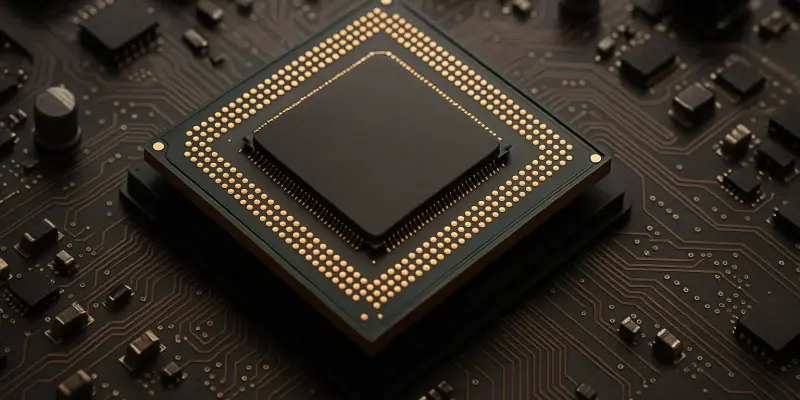The compatibility of AMD’s Ryzen 9000 series CPUs with ASRock motherboards has come under scrutiny due to incidents where these CPUs experienced burnouts. This issue centers around the configurations of Precision Boost Overdrive (PBO), which aims to optimize CPU performance by modifying power and thermal constraints. However, controversies emerge as ASRock motherboards reportedly exceed AMD’s recommended values for electric design current (EDC) and thermal design current (TDC). These elevated limits potentially impose additional electrical stress on the CPUs, leading to damage and reducing reliability. This article delves into the mechanisms contributing to these failures and explores potential solutions while addressing the broader implications for users and manufacturers.
Precision Boost Overdrive Challenges
Understanding the Impact of PBO Activation
Precision Boost Overdrive, or PBO, offers an enticing promise of enhanced CPU performance by dynamically adjusting power limits based on workload demands. However, when PBO is automatically activated — such as when launching AMD’s Ryzen Master software — users may be unaware of the changes being applied to their systems. In these circumstances, motherboard configurations, particularly from brands like ASRock, may push the Ryzen CPUs to operate at their maximum potential, driven by overzealous PBO settings. This automatic activation complicates matters further, as the adjustments become difficult to detect and are not conveniently reversible through BIOS settings, leaving users without straightforward means to return to default configurations. Investigations reveal that even mid-tier motherboards, such as the B650E from ASRock, utilize PBO settings that demand higher EDC and TDC values than AMD’s standards. The increase in current requirement strains the Ryzen 9000 CPUs by exposing them to augmented electrical stress, ultimately leading to potential burnout. The absence of overt warnings or adjustments when enabling or modifying PBO settings amplifies the unperceived risk faced by users. The intricate relationship between PBO limits and electrical safety becomes evident, emphasizing a need for transparency from manufacturers in providing clear information about risks associated with automatic feature settings.
Manufacturer Responses and User Precautions
The interplay between PBO configurations and motherboard design calls for a careful approach, both from manufacturers and users. ASRock’s advice to update the BIOS to address voltage inconsistencies denotes a starting point towards resolving issues. Updating motherboard firmware could potentially recalibrate PBO settings to align more closely with AMD’s recommendations, although official statements from ASRock and AMD are still awaited. Meanwhile, tech experts emphasize the need for users to remain vigilant, encouraging a thorough understanding of BIOS options and PBO adjustments. Yet, even with BIOS updates and user interventions, comprehensive transparency remains essential to prevent widespread hardware failures. Users are encouraged to regularly check for and apply firmware updates, provide feedback, and seek expert consultations when necessary. This proactive stance can mitigate the risks of CPU damage resulting from unchecked PBO settings. Until manufacturers issue definitive guidance, users should remain cautious, balancing the temptation for optimal performance with the sustainability and longevity of their hardware investments.
The Path Forward for Consumer Safety and Product Reliability
The Demand for Greater Transparency
Consumer trust in motherboard and CPU manufacturers hinges on transparency regarding feature settings that impact performance and hardware longevity. There is an overwhelming consensus within the tech community that calls for more detailed communication from both AMD and ASRock. Consumers deserve access to clear guidelines and warnings about using PBO and its potential risks. This ensures users are informed about the decisions impacting their hardware. Establishing an industry standard for how PBO settings are portrayed and managed will build user confidence, with significant emphasis placed on the responsibility of brands to protect the investment consumers make in their products.
Furthermore, the realization of this transparency serves broader industry objectives. By fostering trust and ensuring longevity in CPU-motherboard compatibility, manufacturers can secure continued consumer loyalty. Clear guidelines and reliable updates could instigate the necessary confidence users need to adopt and explore advanced features cautiously. Sustained communication between stakeholders within the technological ecosystem is vital to identifying and remediating these complications.
Anticipating Further Developments
The compatibility between AMD’s Ryzen 9000 series CPUs and ASRock motherboards has been questioned following incidents of CPU burnouts. At the heart of this issue is Precision Boost Overdrive (PBO), which is designed to enhance CPU performance by adjusting power and thermal limits. Problems arise because ASRock motherboards have been accused of surpassing AMD’s suggested limits for electric design current (EDC) and thermal design current (TDC). These excessive limits could subject these CPUs to additional electrical strain, resulting in damage and affecting their long-term reliability. This situation has sparked debates around its causes and potential remedies. The article examines the mechanisms responsible for these failures and looks at possible solutions, while considering broader impacts on users and manufacturers. It urges a closer look at motherboard settings and the need for alignment with AMD’s specifications to prevent further damage, thereby ensuring both performance optimization and hardware safety.

